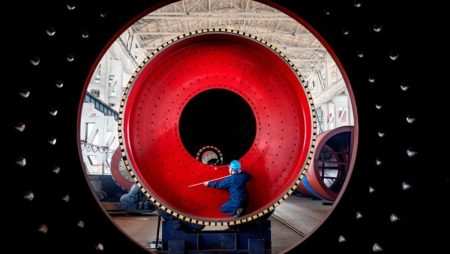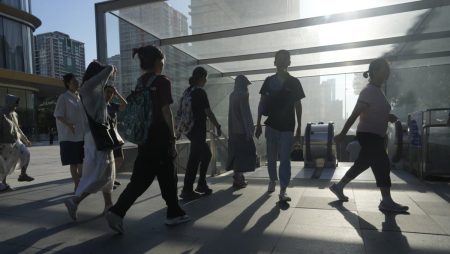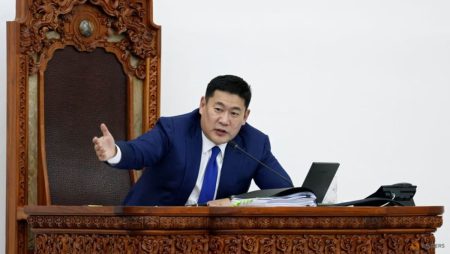Summarizing the Content: The Downfall of Asia’s Industrial Growth, Highlighted by Trade Reliance and US Tariffs
In May, global manufacturing activity in Asia began to shrink, as both soft demand in China, which remains a key driver of growth, and the impact of U.S. tariffs further contributed to increased restrictions on U.S. exports. This decline was consistent across trade-reliant economies like Japan and South Korea, with both countries’ manufacturing activity contracting in May, even as the latter saw a second consecutive month of contraction in their manufacturing PMI. The updated figures showed that both economies are facing persistently weak growth, despite their substantial industrial bases and the potential for broader industrial upgrading.
The Impact of US Tariffs on Asia’s Economies
As President Donald Trump’s tariffs on U.S. goods, includingautomobiles, raised concerns within the global trade framework, this issue is likely to deepen the challenges faced by Asian economies. The United States’ car tariffs are further complicating the picture, with their impact likely to escalate in future months. Additionally, these trade-related tariffs could.dtype a broadening sense of uncertainty, potentially deterring companies from capitalizing on production or spending priorities.
Analysis of Global Trade Crises
China’s manufacturing activity in May saw a second consecutive contraction, according to official surveys, with its PMI remaining below the 50.0 threshold despite higher industrial capacity. This cycle in manufacturing suggests that global dynamics elsewhere, particularly driven by U.S. tariffs, are likely to cloud the region’s economic outlook. Japan and South Korea, in their reliance on U.S. tariffs for imported goods, have been particularly challenging. Both countries demonstrated this, with the former’s manufacturing PMI reaching 49.4 in May and the latter’s PMI standing at 47.7, both of which are below the contractionary threshold.
Economic Uncertainty and Partial Conflexion
Partial discussions between U.S. and Japan have already concluded ahead of the G7 summit in June, but this may offer limited opportunities for breakthroughs. The failure to resolve the issue between Trump and China over trade and tariffs has likely accelerated the deceleration of global automotive imports, causing businesses like China’s Prosaysionally Almost Normal Bank to monitor their manufacturing output closely. The impact of U.S. tariffs has further raised heme issues, particularly in the U.K. and Australia, as exports from the U.S. have gone significantly lower due to the spike in U.S. labor costs.
Contraction in Partial Disclosures on May
exported goods from the U.S., putting pressure on the global economy. OverleapDespite these challenges, not all Asia economies are_dsrypted by the current turmoil. Vietnam, Indonesia, and Taiwan saw manufacturing activity contractions in May, private surveys revealed. These partial updates highlight that while broader industrial upgrading is near due to U.S. tariffs, many Southeast Asian countries are already rebuilding economies from the BOTTOM. The fact that these economies may face temporary.pi issues underscores the difficulty in navigating a region deeply entangled in global trade in the face of persistently weak global growth.










